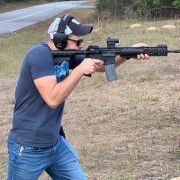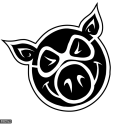While doing some youtube searching for Claude Werner I somehow wound up on a Jerry Miculek video from 2013. The video has a ton of great information in it, from someone that likely outshoots every member of this forum on any given Tuesday.
This particular video wasn't new to me. I saw this video shortly after it was posted (possibly early 2014ish) while I was a gun enthusiast but certainly wasn't a shooter who was putting in effort to get better. I was already aware of the differences between the isosceles and weaver stances, and pretty much chalked old Jerry up to a natural talent who could never be duplicated. I thought his discussion about recoil control was great, especially after seeing how he shot near the end of the video. I mean this old guy in the funny brim string hat can really shoot.
Tomorrow makes a year since I began my training log here, and with it a year of me actively consuming everything I can about shooting and defense. A year of active dry fire, with about a range visit a week for 7 months of it. A lot of sweat during dry fire, a lot of disappointment on the range, a lot of concentrated effort. A lot of podcasts, youtube videos, and plenty of interaction here on PF.
So what was different when I bumped into the video today? Perspective. This time watching Jerry talk I picked up on things that I already knew when I started putting in the work but hadn't fully appreciated. When Jerry mentions elbow position in the video I had a little eureka moment, and presented my pistol a few times thinking about them and their consistency. The he mentioned all his weight being on his toes... suddenly I thought of Gabe White and others telling me to get more weight behind the gun, but now I had a better idea about how to do that without a forward lean. Now I need to work that in my dry fire. Then Jerry talked about "seeing fast" being required to shoot fast. That's something I've been working on and have found is important through a few steel competitions I've shot. Awesome. He also talks about leaving his head up to look out the center of his eyes being helpful to seeing faster... It's like he's talking to me. I also now know the importance of the consistency that he emphasizes, and realize that consistency is what produces a shooter like Jerry. He isn't magic, he is well practiced.
All of these things were things I had heard before. Nothing new here. I've known it since 2014 at least. But having more experience and more frame of reference seriously changed what I got out of this video. The same information but I am now better equipped to absorb it, understand it, and apply it. I really puts the saying "Don't know what you don't know" into better perspective. I still hate the saying and it seems like an over used firearm training industry cliché at this point... but it doesn't mean it isn't true. Basically the more you know, the more you can learn from the resources you have. And that's awesome.
What resources have you gone back to and learned from again? Videos, Podcasts, Posts, Articles, Classes, whatever.
What things did that second look help you learn, realize, or somehow bring to fruition that you may not have otherwise?
Thanks for reading my novel.
-Cory




 Reply With Quote
Reply With Quote



